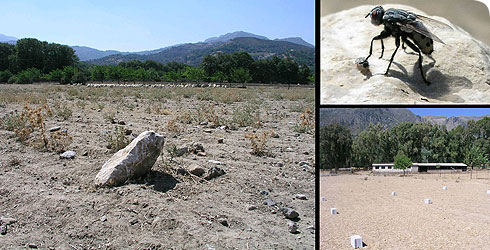Distribution and habitat
Distribution
Wohlfahrtia magnifica is widely distributed throughout the warmer, southern parts of the Palaearctic region, from the Mediterranean basin, through central and eastern Europe to northern and central Asia, Mongolia, China and Afghanistan (Hall and Farkas, 2000).
Habitat
The adults are thermophilic and inhabit hot and arid environments, usually being observed in flight only on sunny days in the summer, from May to October in the northern hemisphere to which they are restricted.
Typical environments are forest-steppes and the steppes or semi-deserts of Russia where Portschinsky (1884, 1916) made his studies.
Dispersal
Adults of Wohlfahrtia magnifica are strong fliers, but no estimates of their flight range have been made.
They colonised the whole island of Crete within about 5 five years, but the major potential agents for their dispersal are shipments of infested livestock.
Population biology
There is little information on population biology but, like other obligate myiasis-causing parasites, the adult density is low compared to related carrion-breeding species.
There is little information on population biology but, like other obligate myiasis-causing parasites, the adult density is low compared to related carrion-breeding species.
